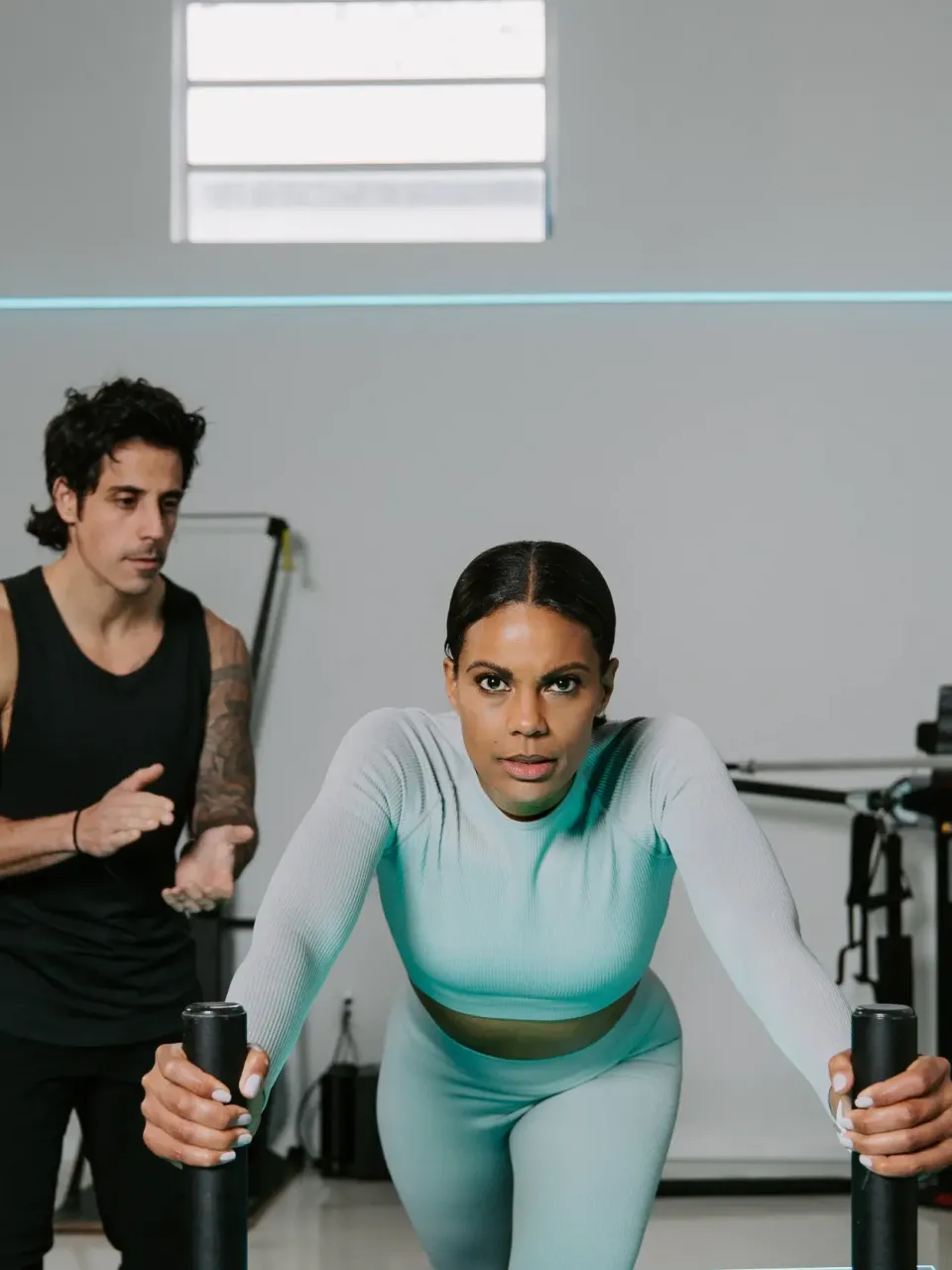Getting Rid of and Relieving Sore Muscles

We hear it all the time, people think that soreness is a sign of a great workout. Not always true by the way…If aiming for soreness as a sign of progress, then you’ll need to know how to relieve those aching, sore muscles as soon as possible. Our personal trainers share our favorite how-to tips to get rid of and alleviate sore muscles.
1. Warm-Up with Dynamic Stretches
You should always warm-up the muscles and joints before your workout. Not warming up before a workout is both dangerous and counter-productive. When you work out with us, we’ll make sure you get a good warm-up to get the blood and oxygen flowing to the muscles.
Depending on your experience level, when working out on your own, aim to warm-up for approximately five to 10 minutes. This should be enough to get your heart rate to start to elevate. Common warm-up methods include brisk walking, light jogging, jumping jacks, or riding the stationary bike. You can even get workout dice to switch things up.
Following a warm-up, you’ll want to stretch loosened muscles to help them be more flexible. This is where you’ll want to start slowly stretching with dynamic stretches. Dynamic stretches, slow-paced and controlled movements, rather than holding the stretch. Dynamic stretches include arm circles, calf raises, hip rotations, and yoga poses like a Sun Salutations flow.
Related> Are you chasing the sweat? (PSA-just like soreness isn’t a sign of great workout being sweaty isn’t either)
2. Do Static Stretch and Cool-Down Post-Workout
Since we’re talking about stretching, don’t be tempted (not that our trainers would let you) to skip your stretching after your workout. While your muscles are still warm, do “static” or holding stretches stretches for about 30 seconds at a time. These sort of post-workout stretches help lengthen muscles and improve flexibility and range of motion.
Don’t just run out of the gym, take the time to cool down from a workout. A light, 10-minute walk or jog around the neighborhood allows heart rate to decline back to normal. It also encourages blood flow and promotes removing the buildup of lactic acid from your body.
3. Wear Good Workout Gear
Your soreness may actually be from worn out attire. It may be time to see if new shoes or compression clothing helps relieve the root cause of the soreness.
4. Hydrate
Maintaining hydration is key to muscle recovery. If dehydrated, you risk severe muscle cramping. While water is a clear choice beverage, other fluids can impact muscle recovery.
Sports Drinks
Sports drinks can help reduce the risk of muscle cramps, headaches, and nausea during and after working out. We have a couple on tap here at the gym you can sip on! Staying hydrated helps delay muscle fatigue and offers extra energy for longer, more intense workouts.
Chocolate Milk
Did you know that milk really does do a body good? While regular milk is great, a study published in Medicine and Sport Science showed that chocolate milk immediately after exercise and again two hours post-exercise appeared to be optimal for recovery and lessen risk of muscle damage.
Cherry Juice
Tart cherries are rich in antioxidant and anti-inflammatory properties. For runners, drinking it may reduce muscle damage and pain during strenuous exercise.
Trainer Tip: Adequate hydration keeps your joints lubricated. This is important for runners and strength trainers who put great stress on the joints.
5. Roll Out
In addition to a cool down, massaging your muscles with a foam roller provides myofascial release for the relaxation of contracting muscles. When muscles are relaxed, blood flow and circulation is improved and promotes a speedier recovery.
Massage truly aids in muscle recovery and that’s why we offer massage therapy for our gym clients. Seriously, frequenters of the massage table swear by its effectiveness.
6. Eat Post-Workout
While working out is essential to grow muscle, so are the right nutrients. When dealing with extreme soreness, you may want to start eating post-workout. This replenishes glycogen stores and puts the body in an anabolic state, the process of building muscle.
Eat a balance of protein and carbs within an hour of working out. To optimize muscle recovery consider pairing protein with fruit. This influences muscle refueling thanks to their natural carb content, potassium and antioxidants that protect against muscle fatigue and cellular damage.
Including fat post-workout can help promote proper cellular growth and development to help ease any aches. Healthy fats are good for pre-workout too since they provide energy to fuel your workout. Fat also assists the body to absorb valuable vitamins.
Related > Food for your Lifestyle
7. Use Sore Muscles
“Active recovery” using the same muscles the next day can be a good way to alleviate some soreness. Say you have sore legs from biking, try a leisurely walk to engage and loosen tight muscles.
8. Rest
Not just rest, but really rest. Aim to sleep the recommended seven to nine hours of sleep on a nightly basis. Crazy right?!
Having adequate sleep is key for optimal recovery. Sleeping allows your muscles to relax and repair themselves. Sleep better and set an alert for a consistent bedtime.
Ready to Get After It?
Call/text – (813) 440-3016 – to workout and recover with our 5-star team. Visit our South Tampa studio gym for a true wellness lifestyle including massage therapy, acupuncture, and chiropractic care today!









